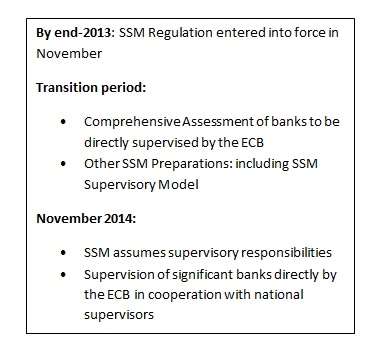 Pentti Hakkarainen, deputy governor of the Bank of Finland, spoke recently on the prospects for a banking union in Europe, that is, for a single supervisory/regulatory system of those European banks with significant cross-border impact. He billed his talk as a discussion of the “implications for Nordics,” because he was speaking in Stockholm, Sweden, and because the Nordic countries have their own experiences with a “highly interconnected and integrated financial market.”
Pentti Hakkarainen, deputy governor of the Bank of Finland, spoke recently on the prospects for a banking union in Europe, that is, for a single supervisory/regulatory system of those European banks with significant cross-border impact. He billed his talk as a discussion of the “implications for Nordics,” because he was speaking in Stockholm, Sweden, and because the Nordic countries have their own experiences with a “highly interconnected and integrated financial market.”
Some Finnish Context
Finland has been part of the EU since January 1, 1995, and – at least in the early years of that membership – the union was very popular. Indeed, for years Finland had a reputation as the only pro-integrationist country among the Nordic group. Denmark, Sweden, and Norway all were very skeptical of the EU and especially of the single currency, with much of the population thinking it all a plot to force cutbacks in their system of universal social benefits funded by high levels of taxation.
Quite recently, a Eurosceptic current of public opinion has appeared in Finnish politics, too. In 2011, a party that called itself the “True Finns” at first, and later simply “The Finns,” won 19.1% of the vote in parliamentary elections, and with that won 39 seats in the country’s parliament.
Hakkarainen doesn’t discuss his nation’s politics. He’s interested, rather, in the next step in the integrationist project: a proposal set out by the EU’s leaders in June 2012 for the creation of a Banking Union that will assign much supervisory authority to the European Central Bank. The idea is that only the continent-wide authority can break through the negative feedback loop observed in recent years, a loop in which the weakness of a nation’s sovereign bonds weakens its banking system, which in turn weakens its sovereigns, etc.
The proposal has three pillars: a Single Resolution Mechanism (that is, a unified system for administering such bail-ins, bail-outs, and liquidations of banks as may become necessary in future crises), a Single Supervisory Mechanism, and the harmonization of deposit insurance schemes.
Hakkarainen presents some of the particulars of the SSM in a slide, reproduced here.

Source: Pentti Hakkarainen address in Stockholm, May 5, 2014.
This is all both reminiscent of and quite different from a proposal made by Stefan Ingves even before the recent wave of crises. In 2006, Ingves, then (and still) the governor of the central bank of Sweden, proposed a pan-European supervisory body to “focus on the presently about 40 truly cross-border banking groups,” gather information, creating unified risk assessments, and overseeing activities.
Ingves’ idea was that the new body should be separate from and independent of either the EC or the ECB. Hakkarainen passes over this difference rather quickly, noting that the independence idea is “not a feasible option,” and otherwise congratulating his fellow Nordic central banker on anticipating the course of events.
Those Three Pillars Again
Two of the three pillars of banking union are already in place. Both the SRM and the SSM exist, at least in principle. As Hakkarainen observes, the assignment of supervisory tasks to the ECB “became effective in early November 2013.” The finalization of the particulars of SRM/SSM continues. Still, it is clear that there will be a resolution mechanism that will also involve a single fund, whence will come necessary bail-out monies, and that this fund will be “financed via levies on the banking sector itself.”
None of this means that the erection of the third pillar will prove easy work. A deposit insurance scheme seems to be the sort of social-welfare measure of which the national legislatures in the various countries involved will be eager to retain some control.
Hakkarainen concludes his talk on an upbeat note: “national interests, and I … argue, banks’ interests as well, are taken care of when matching regulatory and supervisory institutions with the reality of the banking business,” as, he believes, the ongoing reform will do.



